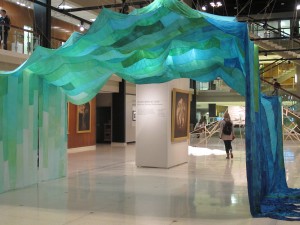
The BYU Department of Visual Arts announced the final decision to move one department to another college and split the remaining programs into two new departments.
The changes will be implemented Jan 1, 2015 and come after a two-year deliberation process.
The Department of Art History and its faculty will become part of the the Department of Humanities, Classics and Comparative Literature in the College of Humanities. The Department of Humanities, Classics and Comparative Literature’s name will be changed to Department of Comparative Arts and Letters.
Two new departments will be formed from the remaining programs. The new Department of Design will include the illustration, animation, photography and the graphic design programs, while the second proposed Department of Art will incorporate the art education and studio art programs.
Deciding to make the change required a lot of research and preparation. Justin Kunz, acting head professor of the illustration program, traveled around the country with the DVA Futures Working Group to gather information on how prestigious universities and colleges of art and design run their programs.
The group met with the BYU faculty, presented its findings and came to a consensus that splinting the department would more effectively aid students in the learning process.

Kunz said having the two smaller departments of art and design would “permit greater autonomy for the major areas within (the) departments to pursue academic and creative goals tailored to (the) students’ particular needs while serving a smaller, more tight-knit community of learners.”
He compared the “decision to divide” to creating a new LDS ward.
“There’s a certain point at which a ward is simply too large for members to know each other well, too unwieldy for all members to effectively serve and receive service in their individual capacities,” Kunz said. “That’s when wards are split and new wards created. Though we feel sad to say goodbye to our good friends, we understand changes like these are signs of health and growth.”
Mark Johnson, area head of the art history program, said it makes sense to cut down department size and join the art history program with the College of Humanities because art history is a “humanities discipline.”
“The College of Humanities is a natural fit for the kind of research and teaching we do; many humanities classes already had a component of art history, and the department already had two art historians, so it made sense to join all art historians together in one department,” Johnson explained.
The two departments have already worked together, collaborating on a study abroad this past spring to Europe. Johnson anticipates creating even more events and opportunities for art history students once the programs have been merged.
Students currently majoring or planning to major in any of the programs can expect few changes in the application process or classes offered.




